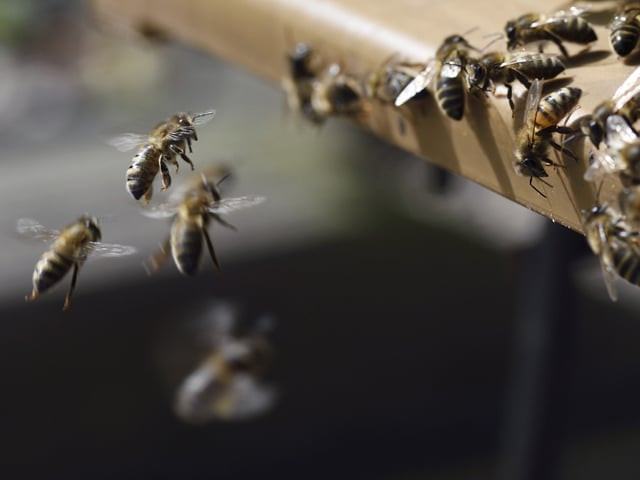Bees can see much better than thought: scientists
Research offers useful new information about insect vision more broadly

PHOTO: AFP
Spider venom may offer hope to stroke victims: scientists
Researchers already knew bees could see colours, but now they have discovered their vision is 30 per cent clearer than earlier studies showed.
Steven Wiederman, from the University of Adelaide's Medical School, said all previous research had been done in dimly lit laboratories, so his team studied western honey bees in bright daylight.
"Bright daylight and dark laboratories are two completely different environments, resulting in anatomical and physiological changes in the resolution of the eye," he said in a study published in Scientific Reports.
Scientists took electrophysiological recordings of the neural responses in photoreceptors in a bee's eyes -- the detectors of light in the retina.
Each time an object passes into the field of vision, it registers a neural response.
"We found that in the frontal part of the eye, where the resolution is maximised, honey bees can clearly see objects that are as small as... the width of your thumb when you stretch your arm out in front of you," said Elisa Rigosi from Sweden's Lund University.
"This is 30 per cent better eyesight than has been previously recorded."
She added that the smallest object a bee can detect, but not clearly, amounted to "one-third of your thumb width at arm's length", which was five times smaller than previously thought.
Scientists may have found a way to fight blindness in young people
"These new results suggest that bees have the chance to see a potential predator, and thus escape, far earlier than what we thought previously," she said.
"(They can) perceive landmarks in the environment better than we expected, which is useful for navigation and thus for survival."
Wiederman said the research offered useful new information about insect vision more broadly.



















COMMENTS
Comments are moderated and generally will be posted if they are on-topic and not abusive.
For more information, please see our Comments FAQ